We’d forgive you for not keeping up with the booming ‘light SUV’ segment. A whole car philosophy which barely existed five years ago, the light SUV is the smaller than ‘small SUV’ car which is replacing city-sized hatchbacks at an alarming pace.
For this comparison test, we’ve assembled three of the most recently launched examples. The much-hyped Toyota Yaris Cross, the important-for-the brand Ford Puma, and the intriguing Skoda Kamiq which we think has flown under the radar compared to the big launches of the other two.
We’ve also set our price benchmark at "about $30,000" and chosen variants to suit, with a base Skoda Kamiq 85TSI, a base Ford Puma, and a mid-spec front-wheel drive hybrid Yaris Cross GXL.
Three never-before-seen nameplates in an emerging category should make for an interesting contest, but will one be a clear victor, or like our recent city hatchback comparsion, will it be so close to call it’s down to taste alone?
Read on to find out.
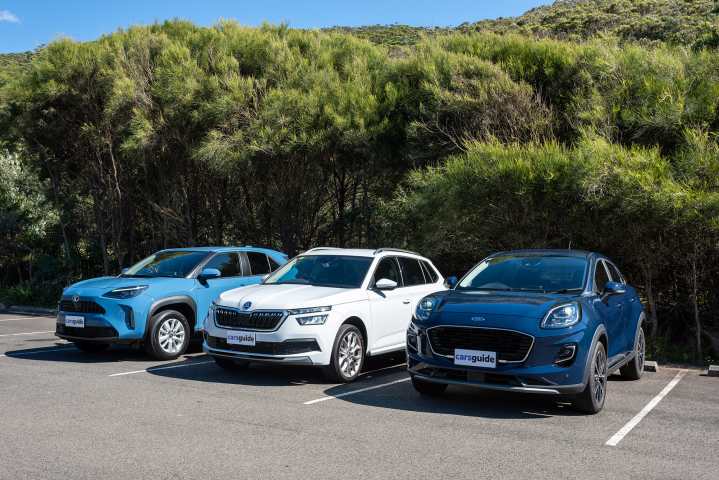
Price and features
As we’ve already pointed out, our price benchmark for this test was the $30,000 mark. Both the Skoda Kamiq 85TSI and Ford Puma (the base model is simply called Puma) have the same starting price of $29,990, but the Puma's is an MSRP price, before on-road costs, where the Kamiq 85TSI's sub-$30K sticker is a drive-away deal (its official MSRP is $27,990 for the auto tested here).
Meanwhile our third contender is the Toyota Yaris Cross. We’ve chosen it in mid-grade GXL trim, with the mid-spec front-wheel drive hybrid engine option. It wears a slightly taller MSRP than the other two cars here at $31,990. Now, to be clear, we could have chosen a Yaris Cross GXL without the hybrid drive option ($29,990) but we really wanted to see if Toyota’s signature hybrid drive would be a silver bullet here, and the GXL trim is most reflective in spec level against the other two cars.

In terms of multimedia, all cars here deliver. Both the Puma and Kamiq have 8.0-inch multimedia touchscreens, while the Yaris Cross has the smallest unit at 7.0-inches. All are capable of supporting Apple CarPlay and Android Auto connectivity, but only the Kamiq offers it wirelessly (albeit as part of a $3800 Tech Pack).

Interestingly the only car here to not offer wireless phone charging as standard is the Yaris Cross. The Skoda does away with old-school USB-A ports, swapping them out for a USB-C only setup, so you might want to invest in a few converters.
When it comes to built-in navigation the Puma and Yaris Cross have it standard at this grade, but it again falls into the Skoda’s Tech Pack.

All cars have digital displays in their driver’s instrument binnacle, but the Ford Puma misses out on a fully digitised dash, making do with old-school dials. The Yaris Cross has quirky digital elements, while the Skoda thoroughly impresses with its fully digital ‘Virtual Cockpit’ it shares with VW and Audi products.
All cars on this test get push-start ignition, but annoyingly the Puma is the only car not to pair this with keyless entry.
In terms of wheel size, all three cars are different. The Kamiq has massive 18-inch alloys, even here in the base grade, while the Puma gets small-looking two-tone 17-inch rollers, and the Yaris Cross looks decidedly base on its 16-inch single-colour rims.

Each car has its own unique addition to the spec list. The Skoda adds the luxury of a powered tailgate, rare at this price, while the Puma bizarrely has standard message seats for the front two occupants. Meanwhile, the Yaris Cross is the only car in this test to have a front- and top-down surround view camera suite.

All cars here make do with manually operated cloth seats, but all also impress with standard LED headlights.
Finally, each car also has a competitive safety suite, with some items notably omitted or option-packed away. Read on to the Safety section later in this review for more on that.

A winner here? This section is probably the closest of them all, but I’d give the Skoda a nudge for its impressive array of tech and practicality inclusions over the others. Plus, if you really want you can option the handful of items it misses out on.
| Kamiq | Yaris Cross | Puma |
Price | $29,990 | $31,990 | $29,990 |
Multimedia screen | 8.0-inch | 7.0-inch | 8.0-inch |
Digital instruments | Full | Full | Partial |
Apple CarPlay/Android Auto | Yes (wireless CarPlay optional) | Yes | Yes |
Wireless phone charging | Yes | No | Yes |
Built-in sat-nav | Optional | Yes | Yes |
Keyless entry & push-start | Yes | Yes | Push-start only |
Motorised tailgate | Yes | No | No |
Headlights | LED | LED | LED |
Wheel size | 18-inch | 16-inch | 17-inch |
Cruise control | Adaptive | Adaptive | Standard (adaptive optional) |
Climate control | Dual zone | Single zone | Single zone |
Parking sensors | Rear | Rear | Front (optional) + rear |
Parking cameras | Rear | Rear + top-down + front | Rear |
| Kamiq 85TSI | Yaris Cross GXL 2WD Hybrid | Puma |
Price and features | 8 | 7 | 8 |
Design
Despite all three cars here aiming for similar demographics at a similar price-point they each have a quite distinct approach to design. While we know this is a subjective area, we’ll still take the time to point out some notable attributes of each.
Starting with the Skoda, and it’s clear of these three cars, the Kamiq is the most conservative. The more I look at it though, the more I like it. There are lots of little details on this car which the others miss. Things like the pattern-work in its LED headlight clusters, the detailed grille with a good balance of gloss and matte, the way the huge wheels fill its arches and the strong character lines run down its sides.

The rear of the Kamiq is finished nicely with tastefully executed LED fittings, and SKODA lettering across the rear. What’s most alluring about the Kamiq though is its lack of plastic cladding and low ride height leaving the impression not of an SUV, but of a hatchback. And that’s really what the Kamiq is. A small SUV for someone who doesn’t what an SUV – and there’s a lot to be liked about that. You could call it a crossover, perhaps.

On the inside, the Skoda trades its exterior conservatism for a bit of wow-factor when it comes to its large screens and upmarket-feeling materials. There’s a lot more variation of texture and design in here than there is in either of the other two cars, and soft-touch surfaces have been applied well. The seat design is even the best of the three with nice pattern-work and interesting suede contrast.
Next up is the Ford Puma which wears Ford’s latest design language out of Europe. It certainly looks European with all its bubbly curves, and it’s the kind of car which demands your attention. From most angles it’s hard not to take notice of it, particularly with its big smiley grille.

It has an upright but sporty line which works its way from the LED headlights atop the bonnet, over the wheel-arches, then descends at the rear along with its roofline to give it an almost coupe look in profile. The rear is finished nicely with more quirky light fittings, PUMA font work across the boot lid, and a compact overall rear three-quarter. Height-wise, the Puma falls in the middle of the three cars here.
On the inside the Puma wears its small car underpinnings on its sleeve, perhaps to a fault. The number one issue is its monotone dash and lacklustre dial cluster, followed closely by the way the design seems all a bit close and in your face. I liked the padded and sporty wheel design, and Ford hasn’t forgotten soft surfaces in the door and centre console for your elbow, but the overall design still imparts an upright and slightly claustrophobic feel.

The seat trims are so-so in terms of comfort but have some neat pattern-work on them. I have to bravo Ford for its multimedia system. While it misses out on the big-ticket digital dash cluster, the multimedia suite is the fastest and easiest to use of the three cars on this test.
Finally, there’s the Yaris Cross. It brings some of the youthful attitude of the new-generation Yaris hatchback, whilst also trying to slot in with Toyota’s busy SUV lineup. Its face proved controversial in the office, with some being on-board with its quirky looks, and others hating it. Either way, it’s by far the most SUV-like of our three options, with a boxy roofline, squared off edges, and tiny alloy wheels.

There might be a bit of intrigue in its looks, and it offers a distinct alternative to the Eurocentric design of the other two cars, but there’s no getting around the fact the looks of the Yaris Cross might not be for everyone.
Inside and it’s hard not to be disappointed given our Yaris Cross costs even more than the others on this test. It’s hard plastics and nasty finishes galore, with a lack of padded surfaces in the door cards or a centre armrest console making for a notable drop in comfort and cabin ambiance.
To be fair, there’s a good reason the Yaris Cross misses out on a console box which we’ll look at in the Safety section, but it’s still a setback. The dash matches the Yaris hatch with an interesting cascading design, topped out by a small but functional multimedia screen.

Things I do like in the Yaris Cross’ cabin include the almost Mazda-esque leather-bound steering wheel (in fact, all the steering wheels on this test are good), and the funky instrument cluster. The seats are basic, but initially seem more comfortable than the Ford’s (they aren’t over long-distances), and the tall seating position and generous glass make for good visibility.
The winner for me is easy: The Skoda with its superior materials and subtle highlights, but knowing it's a subjective field, I've also got to give props to the Puma for being so damn eye-grabbing and fun.
| Kamiq | Yaris Cross | Puma |
Length | 4241mm | 4180mm | 4168mm |
Width | 1793mm | 1765mm | 1805mm |
Height | 1531mm | 1590mm | 1550mm |
Weight (tare) | 1211kg | 1215kg | 1264mm |
Turning circle | 10.8m | 10.6m | 10.4m |
| Kamiq 85TSI | Yaris Cross GXL 2WD Hybrid | Puma |
Design | 8 | 7 | 8 |
Practicality
Why pick a light SUV over a light hatch? Ask most people and they’d point to how they are more practical. Are they? And which of these three is the most practical? Let’s take a look.
All cars are so close dimensionally, with the Kamiq being the longest by a small margin, the Yaris Cross being the tallest by a small margin, and the Puma being the widest by a small margin.
Hopping in the cabin and each feels quite different. Behind the driver’s seat, the Kamiq feels much more like a hatch than the others, with the seat being set in the lowest position, its doors also seem to offer the widest opening angle of these three, both front and rear, so for ease of access it’s about in the middle of the SUVs here.

Between the driver and front passenger, the Kamiq gets a very small triple cupholder which couldn’t fit our 500mL test bottle, a large cubby under the climate controls with a wireless charging bay, large bottle holders with bins in the doors, and a smallish centre console box with a 12-volt outlet on the front of it. The Kamiq has four USB ports but they are USB-C only, so bring some converters. It’s worth noting Apple CarPlay and Android Auto connectivity did not work on our test car (across multiple phones, cables, and converters), but we’re putting this down to a glitch for now.
Annoyingly, while the Kamiq is the only car here with dual-zone climate, fan speed and vent choice controls are managed through the multimedia screen.
The Kamiq’s rear seat offers the most legroom out of the three cars here and is also the only car with rear adjustable air vents. There are small pockets on the back of the front seats.
Of course, it also comes packed with the brand’s “Simply Clever” touches, like an umbrella in the driver’s door, an ice-scraper in the fuel cap, a collection of nets for securing objects in the boot (plus a removable torch that doubles as the boot light), and a double-sided floormat.
In terms of total boot space, the Kamiq falls between the other two on this test, with 400 litres (VDA) of storage. There is a space-saver spare under the boot floor.

Next up, the Puma. Despite being wider than the Kamiq, the Puma somehow feels narrower behind the wheel, but this is probably to do with its swoopy design-focused roofline which eats interior space. Dark pillars, small windows, and very close-quarters dash elements make the space feel smaller still. At least the trims on the doors and armrest have padded surfaces for your elbows.
The Puma scores a similar three-cupholder arrangement between the driver and front passenger as the Kamiq, but the two large ones actually fit our test bottle. It also gets an odd little angled bay under the climate unit which can wirelessly charge your phone, and a tiny console box which houses this car’s only USB-C port. There is also a USB-A port and 12V outlet sticking out the top of the transmission panel. Useful you get all three, but I can’t help but feel like the uncovered USB-A port will fill with debris.
The door cards feature long angled trenches with cutaways for bottles. These just fit our test bottle. The rear doors aren’t quite as large as the Kamiq’s for access, although the seats are noticeably high.

This makes for again a slightly claustrophobic space, and the Puma offers perhaps the most ordinary support and comfort in the rear seats.
My knees are hard-up against the back of my own seating position in the back, but headroom is okay. The Puma offers flimsy nets on the back of the front seats and no power outlets or adjustable air vents for rear passengers. The bottle holders in the doors accepted our 500mL bottle.
Boot space in the Puma is the largest of the three cars here despite its descending roof and design-led boot lid. It offers a total of 410L which is very good, even encroaching on some mid-size SUVs. While it doesn’t quite offer the same storage tricks as the Kamiq, the boot floor can be raised to be level with the loading lip or removed entirely to reveal a huge area underneath. The Puma has a space-saver spare wheel.

Finally, there’s the Yaris Cross, which has a light and airy cabin feel with a tall roof, big windows, and an upright seating position. As already mentioned in the design section, the lack of a centre console armrest box is a notable omission for practicality purposes. The Yaris’ three large centre cupholders just fit our 500mL bottle. There are two cubbies cut out of the dash design, but annoyingly neither are rubberised so you could lose your objects in a corner or when accelerating.
At this grade, the Yaris Cross gets a single USB-A port awkwardly sticking directly out of the dash, and a 12V outlet hidden at the back of the main storage cubby. There is no USB-C or wireless charging available.
There are reasonably-sized bottle holders with small trenches in the front doors, but that’s about where it ends for front passengers.
Oddly, the Yaris Cross’ rear doors don’t open very far. This could be a particularly annoying issue if you frequently fit a child seat or load lots of luggage into the back-seat area. This problem also affects the Corolla and Yaris, so seems to be a Toyota-wide issue.

The back seat trim, like the Puma, is noticeably stadium (you sit much higher than the front two passengers), but leg and headroom behind my own driving position is decent. The seats offer middling comfort, but the Yaris Cross is the only car here to offer centre cupholders via its drop-down centre backrest. The bottle holders in the rear doors only just accepted our 500mL bottle, but there are no power outlets or adjustable air vents afforded to rear passengers.
Boot space is the smallest of the three here at a still decent 390L. Like the Puma, the boot floor can be raised to be level with the loading lip, but the Yaris Cross’ party trick over the other two is its fully split-folding rear seats. It is also the only car here with a full-size steel spare under the boot floor (something it loses in top-spec AWD guise).

So, do we have an overall practicality winner? Yep, it’s the Skoda Kamiq again with its large doors, superior cabin-space, and neat but meaningful additions.

| Kamiq | Yaris Cross | Puma |
Boot space (seats up) | 400L | 390L | 410L |
Boot space (seats down) | 1395L | No official figure | 1170L |
Spare | Space saver | Space saver | Space saver |
| Kamiq 85TSI | Yaris Cross GXL 2WD Hybrid | Puma |
Practicality | 9 | 7 | 7 |
Engine & Transmission
What powers each of these cars? Similar engines, all part of a new breed of sensible three-cylinder units to power today’s light cars. Gone are the days of old underpowered multi-point injected four-cylinders (mostly).
Two have very similar engines. The Ford Puma and Skoda Kamiq both have 1.0-litre three-cylinder turbocharged engines. The Puma is the most powerful of all the cars here, with 92kW/170Nm, while the Kamiq falls somewhere in the middle with 85kW/200Nm.

Lastly there’s the Yaris Cross, which is a little different. It’s still a three-cylinder engine but its capacity is upped to 1.5-litres. Instead of a turbo, it pairs this naturally aspirated engine to the brand’s signature hybrid drive system. the overall torque output is much lower than the other two cars here though, with electric/combustion combined figures of 85kW/120Nm.

On the transmission front the Skoda Kamiq and Ford Puma are matched again, each with a seven-speed dual-clutch automatic, meanwhile the Toyota Yaris Cross uses a continuously variable transmission (CVT) automatic. All cars drive the front wheels, but only the Yaris Cross’ platform is capable of supporting all-wheel drive - if you're interested, it adds $3000 over the 2WD versions of the hybrid GX, GXL and Urban grades.

Do we have a winner here? The Puma and Kamiq score evenly based on their respective closely matched engine outputs.
| Kamiq | Yaris Cross | Puma |
Layout | 1.0-litre three-cylinder turbo | 1.5-litre three-cylinder hybrid | 1.0-litre three-cylinder turbo |
Power | 85kW | 67kW | 92kW |
Torque | 200Nm | 120Nm | 170Nm |
Transmission | Seven-speed dual-clutch auto | CVT auto | Seven-speed dual-clutch automatic |
| Kamiq 85TSI | Yaris Cross GXL 2WD Hybrid | Puma |
Engine and transmission | 8 | 7 | 8 |
Fuel consumption
Well one car here should easily take the cake, right? You would hope the Yaris Cross, with 20 years of hybrid development behind it, would easily be the victor, and I’m pleased to report it is. And by quite some margin, too.
The Yaris Cross wears a sticker number of 3.8 litres per 100 kilometres for combined cycle fuel consumption which is, in fact, one of the lowest non-plug-in hybrid or EV fuel consumption numbers on sale in Australia today.
Over our testing loop our Yaris Cross returned an at-the-pump measured figure of 4.8L/100km, which is excellent considering the lack of freeways. But then, this where Toyota’s hybrid system thrives, in urban environments. No wonder it only needs a 36L fuel tank.

The Yaris Cross is even capable of running on base-grade 91RON unleaded, which is great from an economical perspective, but perhaps less so for the environment as our friends at Skoda would argue.

Speaking of the Skoda, our Kamiq wears an official combined number of 5.0L/100km and missed its mark by quite a margin on our test loop, returning a pump-measured figure of 8.3L/100km. This was a shame as you could expect a similar figure from an old-school naturally aspirated 2.0-litre on the same loop. It was also the highest variance of claim to actual out of the three cars here.
The Kamiq requires mid-grade 95RON unleaded petrol and has the largest fuel tank here at 50L.

Finally, we have the Ford Puma. It has the highest claimed/combined consumption of the three cars here at 5.3L/100km. Over our loop it had significantly less variance than the Skoda, but still overshot its claim to 7.0L/100km. Like the Kamiq, the Puma also requires mid-grade 95RON unleaded, but has a smaller 42L tank.
Clearly then, there’s something to be said for picking the Toyota when it comes to sipping fuel.

| Kamiq | Yaris Cross | Puma |
Official combined | 5.0L/100km | 3.8L/100km | 5.3L/100km |
Real-world test | 8.3L/100km | 4.8L/100km | 7.0L/100km |
% difference | 66% | 26% | 32% |
Minimum RON rating | 95 | 91 | 95 |
Fuel tank size | 50L | 36L | 42L |
| Kamiq 85TSI | Yaris Cross GXL 2WD Hybrid | Puma |
Fuel consumption | 7 | 9 | 7 |
Driving
How does each vehicle here fare behind the wheel? There were some surprises.
First was the Puma. My initial impression of this car was it felt a little awkward. You seem to sit high and almost over the front axle, a feeling which conspires with the ultra-direct and twitchy steering for a hardly confidence-inspiring first few minutes.

After a while though, I got used to its eccentricities and found it was actually far more composed and fun than my first moments in the car. You can really feel the extra power the Puma has over its rivals on this test, and I was also pleased to find its dual-clutch automatic was mostly free of the jerky, laggy woes which often come with this style of transmission.

Once I’d become confident in the Puma’s grip levels, I found it to be the most fun in the corners, with the heavy but fast steering giving you the ability to easily point this car’s cheery face exactly where you need it to be. The rear wheels sitting far back in this car’s frame seem to really help with the handling, with barely a chirp from the tyres on our hairpin test.

It also proved to be the quietest overall car here. While both the Skoda and Yaris Cross are slightly quieter at low speeds, the Ford proved to be better overall, and by far the best at freeway pace. What little engine noise you do hear proved to be the most satisfying, too, with the little Ford SUV having a distinct purr under load to match its name.

Interestingly, the Puma was the most difficult to park of the three cars on this test. Its relatively heavy steering at low-speed and more limited visibility made it the hardest to use on our three-point on-street reverse parking test.
Next up, the Skoda. There’s no two ways about it, the Skoda overall feels the most upmarket and well balanced of the three SUVs here when it comes to its ride.
Instantly you can connect with its low-down, hatch-like feel, and the light but confident steering is a pleasure to use. Visibility is excellent thanks to the Kamiq’s relatively large windows, and the cabin ambiance is really lifted by all this car’s fittings and features around town.

The engine is almost never audible, being the quietest of the three on test, but unfortunately we found tyre roar to penetrate the cabin more than the Puma at most speeds. The culprit is fairly obvious here: the Kamiq’s huge 18-inch alloys and low-profile tyres. I do think it would easily pip the Ford overall with 16 or 17-inch wheels.

You could really feel the Kamiq’s drop in power compared to the Ford when driven back to back, with a dollop of turbo-lag served up at the press of the accelerator. This isn’t helped along by the dual-clutch automatic and stop/start system which can conspire for a slow and clunky exit from intersections. Once up and running though, we had no complaints.

Despite sporty rubber on those huge wheels, we found the Kamiq to approach the limits of its confidence more easily than the Puma in the harpin test, but its ride was excellent and composed, even over harsh bumps and imperfections.

The Kamiq landed in the middle of our three cars here when it came to the three-point on-street reverse parking test.
Finally, we have the Yaris Cross. Again, it’s tough not to be disappointed by this car’s attributes when put up against the other two on this test. The Yaris Cross proved to feel the cheapest behind the wheel.

That’s not to say Toyota’s hybrid drive isn’t impressive. It is, in fact, the hybrid system is this car’s best feature, giving it a certain ease and instant torque delivery courtesy of its electric motors that the other two SUVs with their dual-clutch automatics struggle with. This also makes it the best in stop-start traffic and by far the easiest to park in tight quarters on our three-point on-street reverse parking test – the front camera was a big help with this, too.

Just like every Toyota hybrid, it also makes fuel saving an addictive mini-game, by which you can constantly monitor your drive state and efficiency to really make the most of it – and if you’ve read our fuel section it’s obvious this part of the system works, we were by no means trying to hyper-mile it, so the hybrid tech is really set and forget.

The disappointment comes in a few areas though. While the electric motor is instantly responsive, you really feel the lack of power in the Yaris Cross’ combined system, and its three-cylinder engine has to rev hard to keep up.
It has a rather unpleasant tone, and it is also by far the loudest of the three cars here. This gives it a far from quiet cabin on the open road, and really takes you out of the electric drive immersion.

The steering in the Toyota is light and compliant, and the ride decently composed, but not as well composed as the other cars, with a notable harshness over its rear axle on bumps.
This was interesting to find, as its Yaris hatch sibling excels in the ride-quality department, as evidenced by our recent hatchback comparison you can read about here.
The ride is met by higher tyre roar than the other two cars as well, which was a let-down to see, particularly as the Toyota has the smallest wheels.
So to sum our driving impressions up: our testing found the Puma to be a surprising amount of fun, living up to its engaging exterior design; the Skoda proved to have the best balance of the cars here, with an upmarket feel from behind the wheel; and the Yaris Cross proved to be super city-friendly and economical, but dynamically not quite on the pace with the two Europeans here.
| Kamiq 85TSI | Yaris Cross GXL 2WD Hybrid | Puma |
Driving | 8 | 7 | 8 |
Safety
All cars here come well equipped when it comes to safety, although there was a clear winner here, too.
All three of our contenders have auto emergency braking (AEB) that works at freeway speeds, as well as being capable of detecting pedestrians and cyclists. Only the Yaris Cross has the new oncoming intersection braking feature.

All cars also score lane departure warning with lane keep assist, but only the Yaris Cross comes standard with blind spot monitoring at the grade tested. It is available on both the Kamiq and Puma but is hidden away in option packs.
Check out our table below for more on active safety features, but suffice to say all the light SUVs here score well.

Where the Yaris Cross starts to pull ahead is its airbag complement. It scores eight, including two between the front two occupants. This is a relatively new innovation which helped its Yaris hatch sibling achieve stellar scores in its recent 2020 ANCAP test. The Yaris Cross has not yet been assessed by ANCAP, but it’s also worth noting it misses out on a centre console box for this reason.

Meanwhile the Skoda has seven airbags, adding a driver’s knee airbag to the standard complement, and the Puma makes do with the standard six (driver, passenger, side impact x2, curtain x2).
On this basis we have to hand the win to the Yaris Cross here, although it’s also worth noting the Kamiq and Puma both hold maximum five-star ANCAP ratings to the 2019 standards.
| Kamiq | Yaris Cross | Puma |
Auto emergency braking | Yes – freeway speed (4-250km/h) with cyclist and pedestrian detection (10-60km/h) | Yes – Freeway speed (10-180km/h) with cyclist, pedestrian, and intersection detection (full range) | Yes – freeway speed (5-130km/h) with pedestrian and cyclist detection (7-80km/h) |
Lane keep assist | Yes (60km/h+) | Yes (50km/h+) | Yes (60km/h+) |
Blind spot monitoring | Optional | Yes | Optional |
Adaptive cruise control | Yes | Yes | Optional |
Rear cross traffic alert | Optional | No | No |
Driver attention alert | Yes | No | Yes |
Traffic sign recognition | No | Yes | Yes |
Airbags | Seven | Eight | Six |
ANCAP rating | Five Stars (2019) | Not yet rated | Five Stars (2019) |
| Kamiq 85TSI | Yaris Cross GXL 2WD Hybrid | Puma |
Safety | 8 | 9 | 8 |
Ownership
It’s a very even playing field here, with all cars sharing a similar warranty promise. All cars have the industry-standard five year and unlimited kilometre warranty promise, as well as a capped price servicing program.
The Yaris Cross is the only car here which can have its warranty extended to up to seven years if a genuine Toyota service schedule is adhered to.
On the service cost front, the Yaris Cross is also the cheapest of the three, with services for the life of the standard five-year warranty averaging just $205 a year. Next is the Kamiq which averages just $280 a year, but it has a significant catch. In order to secure this price, you have to pay for the first five years of servicing up front (or bundle it in on finance) arguably worth it.

Finally, there’s the Puma. There’s no packs or tricks with this one but service pricing works out slightly above the others at an average of $299 a year for the first five years.
All cars have a matching 12 month or 15,000km service interval, but they differ slightly when it comes to roadside assist. Skoda includes roadside assist for 1 year, or for the duration of any purchased service pack (three or five years), while Ford automatically tops you up each year if you use genuine Ford servicing. The Yaris Cross requires you to pay for roadside assist separately.
Is there a winner? The Kamiq is great for flexibility, the Yaris is the cheapest on-paper, while the Puma is no-nonsense in its approach. We think the Yaris Cross is the most compelling of the options here though.
| Kamiq | Yaris Cross | Puma |
Warranty length | 5 year/unlimited km | 5 year/unlimited km | 5 year/unlimited |
Conditions | Servicing cheaper when paid for upfront | Extendable to seven if serviced with Toyota | None |
Yearly average service price | $280 | $205 | $299 |
Service interval | 12 month/15,000km | 12 month/15,000km | 12 months/15,000km |
Roadside assist | 1 year included or included with service packs | Subscription required | Included with genuine Ford service |
| Kamiq 85TSI | Yaris Cross GXL 2WD Hybrid | Puma |
Ownership | 8 | 9 | 8 |
Verdict
Three all-new nameplates in a rapidly emerging SUV sub-class, all landing at the same price point. This was bound to be an interesting test. But I’m sure you want to know: does a clear winner emerge?
First, let’s take a look at the kind of buyer each car would suit.

If you see driving as a bit more than just a chore and are looking for some engagement behind the wheel, the Ford Puma revealed itself to be the better choice. It was the most powerful, most engaging to look at, and most fun to drive of our three SUVs. It’s let down a little when it comes to its interior trim but keeps up with the others on almost every other front.

Then there’s the Yaris Cross GXL 2WD Hybrid. While we were disappointed by its interior trim, extra cost for the hybrid, and some of its qualities when you leave the confines of a city, it proved itself to be the most tailor-made for a close-quarters urban life. The hybrid system excels in the never-ending stop-start traffic of a city, working to save fuel and keep your drive smooth, proving it’s more than just hype.

Lastly, there’s the Skoda Kamiq 85TSI. We think you’ll prefer it if you’re looking to drive something which feels as compact as a hatch with the ride height of an SUV. But for the money, the Kamiq is truly impressive with its upmarket interior and drive experience, which it pairs with an excellent practicality and spec promise for a stellar overall package.

For those reasons the Kamiq is our overall winner in this comparison test, nudging just ahead of the others in our marking scheme. But it wasn’t only there it was the winner - most of the office agreed if you were to live with just one of these light SUVs every day for at least six months, it would have to be the Kamiq, proving it’s the winner on more than just the numbers.
| Kamiq 85TSI | Yaris Cross GXL 2WD Hybrid | Puma |
Price and features | 8 | 7 | 8 |
Design | 8 | 7 | 8 |
Practicality | 9 | 7 | 7 |
Engine and transmission | 8 | 7 | 8 |
Fuel consumption | 7 | 9 | 7 |
Safety | 8 | 9 | 8 |
Ownership | 8 | 9 | 8 |
Driving | 8 | 7 | 8 |
| 64 (8/10) | 62(7.8/10) | 62 (7.8/10) |





















.jpg)
.jpg)




















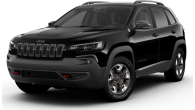
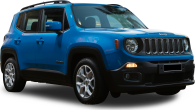














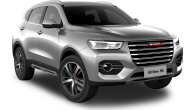

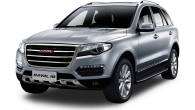



 copy.png)

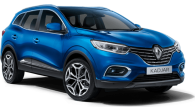




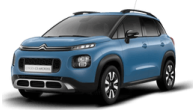






.jpg)


.jpg)
.jpg)

.jpg)

.jpg)
Comments